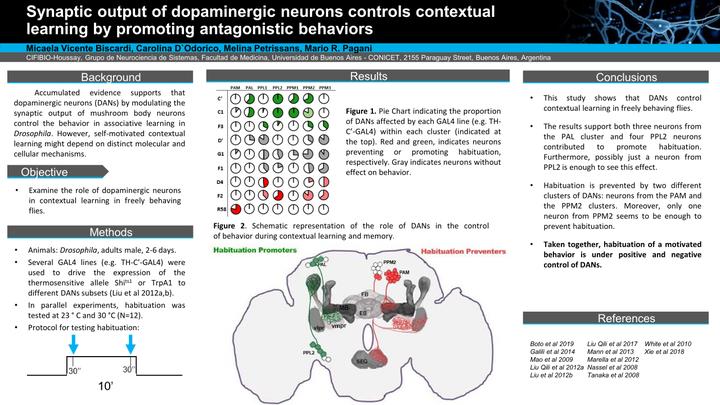Synaptic output of dopaminergic neurons controls contextual learning by promoting antagonistic behaviors

Abstract
Accumulated evidence supports an emerging model for the neuronal control of behavior in associative learning in Drosophila. In such model, dopaminergic neurons (DANs), which encode the unconditional stimuli, modulate the synaptic output of mushroom body neurons driving the appropriate behavior (approaching or avoidance). However, self-motivated contextual learning might depend on distinct molecular and cellular mechanisms. Here, we examined the role of dopaminergic neurons in contextual learning in freely behaving flies. We blocked neuronal activity of subset of DANs by using several GAL4 lines to drive the expression of the thermosensitive allele Shits1. In contextual learning, flies showed habituation of the exploratory activity, in which some DANs promoted habituation, whereas other DANs prevented it. Preliminary studies indicate that, habituation was promoted by two different clusters of DANs. Three neurons from the PAL cluster (projecting to the optu, lobula, vmpr and spsl) or possibly five PPL2 neurons (projecting to the MB calyx, lateral horn, mipr, mspr, lo, plpr, spsl, pilpr, pslpr), or both subsets contributed to promote habituation. Interestingly, habituation also was prevented by two different clusters of DANs. Neurons from the PAM cluster (projecting to the medial lobe of MB neurons) and one or two neurons of the PPM2 cluster (projecting to the subesophageal ganglia, vmpr and vlpr) were individually sufficient to prevent habituation. Taken together, habituation of a motivated behavior is under positive and negative control of DANs.